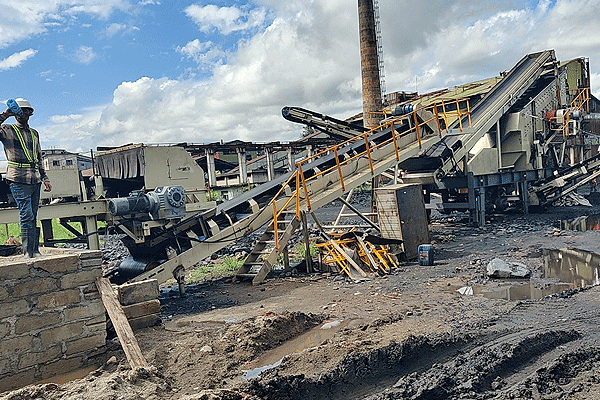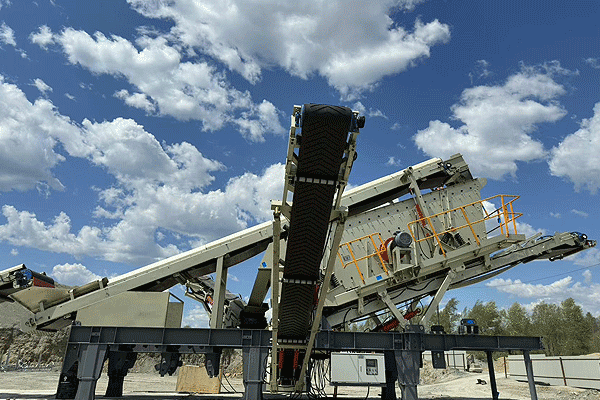Understanding the Differences Between 7 Types of Crushers
Crushers are essential machines used in mining, construction, and recycling industries to break down large materials into smaller, more manageable pieces. Each type of crusher operates differently and is suited for specific applications. Below, we explore seven common types of crushers and their key differences.
1. Jaw Crushers
Jaw crushers are primary crushers designed to handle large rocks and ores. They consist of two vertical jaws—one fixed and one movable—that compress materials between them. These crushers are ideal for hard, abrasive materials and are commonly used in mining operations. Their simple design allows for easy maintenance, but they produce uneven particle sizes compared to other crushers.
2. Gyratory Crushers
Gyratory crushers function similarly to jaw crushers but feature a conical crushing head inside a concave bowl-shaped chamber. They excel in high-capacity crushing applications, such as primary crushing stages in mines or quarries. Due to their continuous operation capability, they offer higher efficiency than jaw crushers but require more complex maintenance procedures.
3. Cone Crushers
Cone crushers are secondary or tertiary crushers that crush materials between a rotating mantle and a stationary concave liner. They produce finer output than jaw or gyratory crushers, making them suitable for producing aggregates or sand-like materials. Cone crushers are often used in road construction and mineral processing plants due to their precision crushing ability.
4. Impact Crushers
Impact crushers use high-speed rotors with hammers or blow bars to strike materials repeatedly until they break apart. These machines excel at producing uniform cubical shapes and are commonly used in recycling applications (e.g., concrete demolition) or softer rock crushing operations like limestone processing. However, wear parts require frequent replacement due to high-impact forces involved during operation.
5. Roll Crushers
Roll crushers consist of two counter-rotating cylinders that crush material through compression forces as it passes between them—ideal for brittle or friable materials like coal or salt particles reduction tasks where minimal fines generation is desired (e.g., coal preparation plants). While simple mechanically speaking compared with cone/impact models mentioned earlier—their throughput capacity remains limited compared against alternatives available today!
6 Hammer Mills (Hammer Crusher)
Hammer mills utilize rotating shafts fitted with swinging hammers which pulverize incoming feed via repeated impacts against internal breaker plates until desired fineness achieved—commonly seen agricultural settings grinding grains into flour alongside industrial mineral processing duties requiring fine powder outputs quickly efficiently without excessive energy consumption concerns arising elsewhere elsewhere within system designs themselves! 
7 Vertical Shaft Impactors (VSI)
Vertical shaft impactors employ centrifugal force generated by spinning rotors throwing rocks against outer anvils causing fractures along natural fault lines resulting superior cubicity end products highly sought-after asphalt/concrete production sectors worldwide thanks ability shape particles precisely controlled manner unmatched competing technologies currently marketplace today! VSIs also excel sand-making processes replacing traditional methods entirely certain cases too depending project requirements involved here now then later down line future developments arise accordingly over time naturally enough given technological advancements occurring regularly these days anyway… 
Conclusion
Each type of crusher serves distinct purposes based on material hardness required output size operational conditions faced daily basis industry professionals worldwide must carefully evaluate needs before selecting appropriate machine ensure optimal performance cost-efficiency long run success overall project goals met satisfactorily every single time possible under circumstances presented beforehand accordingly thereafter moving forward confidently thereafter indeed conclusively speaking finally once again summarizing key takeaways briefly just case missed anything important earlier discussion points raised above previously mentioned sections article itself obviously enough already hopefully helpful readers alike seeking clarity topic hand ultimately always remember choosing right equipment critical achieving best results possible job site no matter what challenges lie ahead future endeavors await patiently ready tackled head-on determination perseverance combined knowledge gained reading guides such this one surely lead victories battles yet come fight bravely wisely always course action taken wisely indeed amen!
